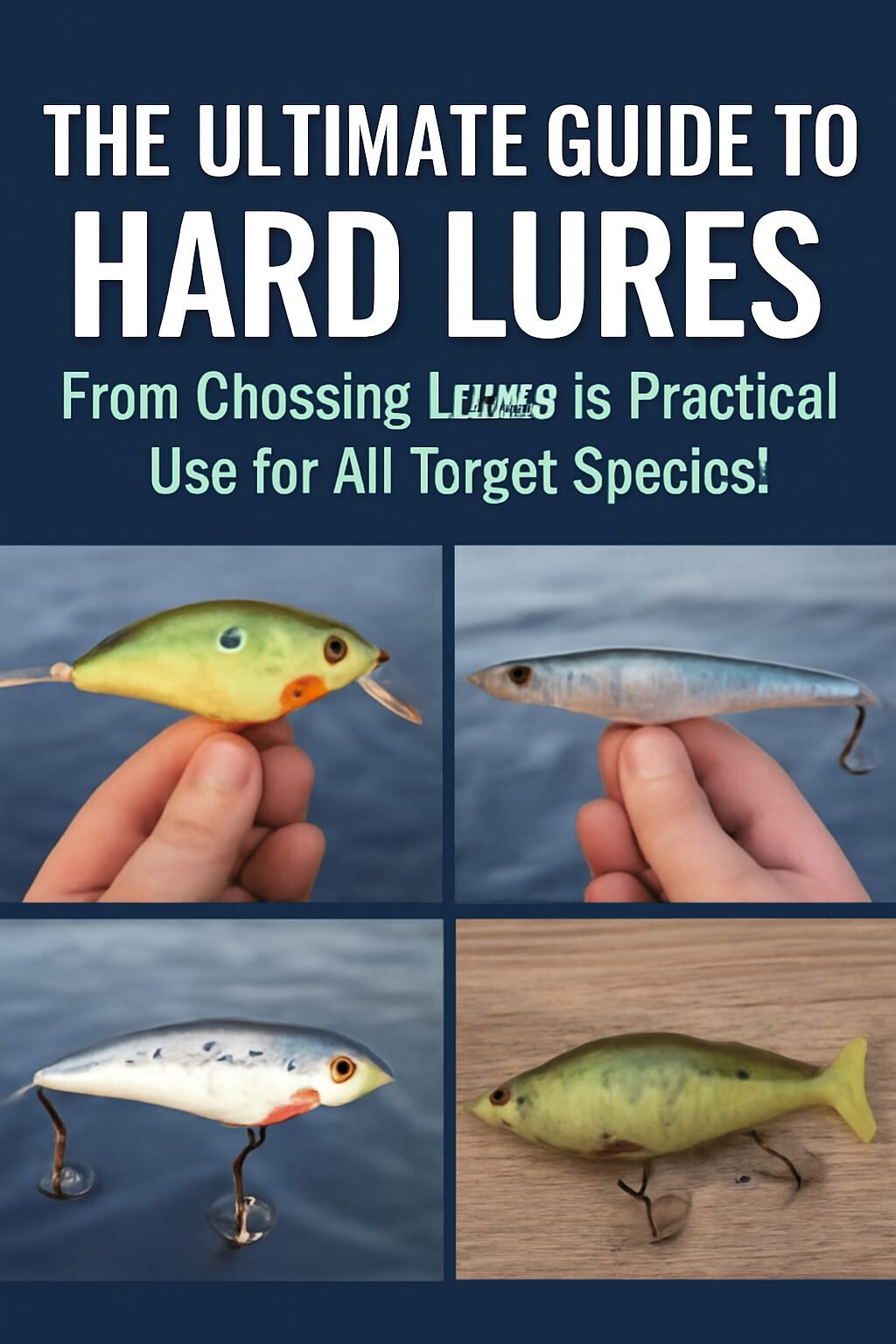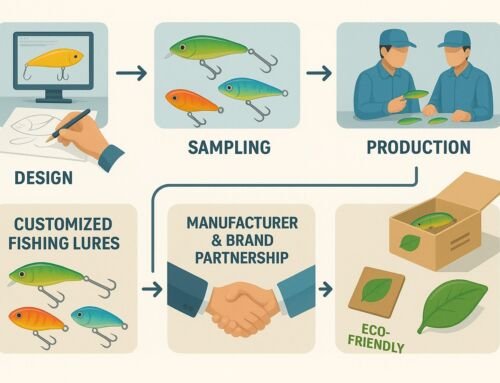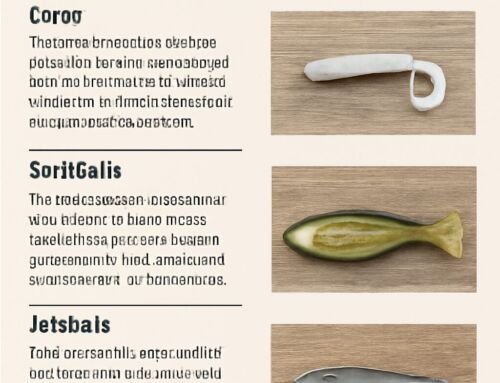The Ultimate Guide to Hard Lures: From Choosing Lures to Practical Use for All Target Species!
Hard lures, also known as crankbaits, minnows, or jerkbaits, are among the most versatile and effective tools in any angler’s arsenal. Whether you are targeting freshwater or saltwater species, hard lures provide exceptional action and a high probability of success. This guide will walk you through everything you need to know about hard lures—from choosing the right bait to mastering techniques and targeting different species.
What Are Hard Lures?
Hard lures are artificial baits made from materials like plastic, wood, or metal, designed to mimic the natural movement of prey. Unlike soft baits, hard lures have a solid body, often incorporating a rattle or vibration mechanism to attract fish. They are available in a wide range of shapes, sizes, and colors, making them adaptable for a variety of fishing conditions.
Hard lures can be categorized into different types based on their intended action:
- Crankbaits – Designed to dive to specific depths and wobble or vibrate to attract fish.
- Jerkbaits – Typically longer and slimmer, jerkbaits are used for their erratic darting action.
- Topwater Lures – These lures float on the surface and are effective for targeting fish that feed on surface prey.
- Swimbaits – Larger lures that mimic baitfish, typically used to attract predatory species.
- Lipless Crankbaits – Designed without a bill, these lures sink quickly and vibrate, attracting fish through sound and motion.
Each type of hard lure is designed for a specific technique and target species. The key to success lies in choosing the right hard lure and mastering its use in different fishing environments.
Choosing the Right Hard Lure
Choosing the right hard lure involves considering several factors, including water conditions, fish species, and the season. Here are some key points to help guide your selection:
- Water Depth:
- For shallow waters, use shallow-diving lures or topwater lures.
- For deeper waters, deep-diving crankbaits or lipless crankbaits are ideal.
- Target Species:
- For bass, jerkbaits, and crankbaits are great options.
- For pike and musky, larger swimbaits and crankbaits work well.
- For trout, try jerkbaits with an erratic action.
- For saltwater species like snook or redfish, topwater lures and lipless crankbaits can be very effective.
- Color and Pattern:
- In clear water, use more natural colors like silver, gold, or shad patterns.
- In murky water, opt for bright colors like chartreuse, red, or black to increase visibility.
- Dark skies or night fishing often require brighter lures, while sunny days are better suited for more natural, subdued colors.
Techniques for Using Hard Lures
Once you’ve selected the right hard lure for the job, it’s crucial to know how to use it effectively. Each type of hard lure requires a specific retrieval technique to simulate the natural movement of prey and trigger predatory instincts in fish.
- Crankbaits:
- Slow and Steady Retrieval: Crankbaits are most effective when retrieved slowly and steadily. This mimics the movement of injured or slow-moving baitfish.
- Stop-and-Go: Pause occasionally and let the lure sink slightly before resuming the retrieve. This mimics the erratic movement of struggling prey.
- Jerkbaits:
- Jerk-and-Pause: Cast the jerkbait, let it sink slightly, then jerk the rod tip with short, sharp movements. Pause between jerks to allow the lure to dart and wobble, mimicking a struggling fish.
- Twitch-and-Sink: For deeper water, let the jerkbait sink between jerks to give it a more erratic, unpredictable action.
- Topwater Lures:
- Walk-the-Dog: This technique involves making a side-to-side motion with the rod to simulate the movement of an injured fish swimming on the surface. It’s effective for species like largemouth bass and snook.
- Pop-and-Stop: For a more subtle approach, cast the topwater lure and then pop it across the surface with short twitches, creating small splashes that attract fish.
- Swimbaits:
- Slow and Steady Retrieve: Swimbaits are best retrieved slowly, imitating the movement of a baitfish swimming naturally. Adjust the speed to match the activity level of the fish.
- Pulsing Action: Add slight pauses or pulses to the retrieve to simulate the behavior of prey that is struggling or injured.
Targeting Different Species with Hard Lures
Hard lures can be used to target a wide range of fish species. Here’s a breakdown of some popular targets and the best lures for each:
- Bass:
- Best lures: Crankbaits, Jerkbaits, and Swimbaits.
- Technique: Use a steady retrieve for crankbaits and erratic pauses for jerkbaits.
- Pike and Musky:
- Best lures: Large Swimbaits, Crankbaits, and Jerkbaits.
- Technique: Use long, fast retrieves to trigger strikes from these aggressive predators.
- Trout:
- Best lures: Jerkbaits, Crankbaits, and Topwater Lures.
- Technique: A slow, steady retrieve with pauses works well for trout, mimicking the movements of smaller fish.
- Saltwater Species (e.g., Snook, Redfish, Tarpon):
- Best lures: Topwater Lures, Lipless Crankbaits, and Swimbaits.
- Technique: Use fast retrieves for predatory fish that chase prey aggressively, or slow down when fishing over structure.
Conclusion
Mastering hard lures is a vital skill for any angler, offering a versatile and effective way to catch a wide range of species. By choosing the right lure, understanding its action, and applying the appropriate technique, you can significantly improve your chances of success. Whether you’re targeting bass in a local lake or chasing redfish along the coast, hard lures provide the necessary tools to get the job done.
With this guide in hand, you’re ready to take your lure fishing to the next level and enjoy successful, memorable outings on the water. Happy fishing!






